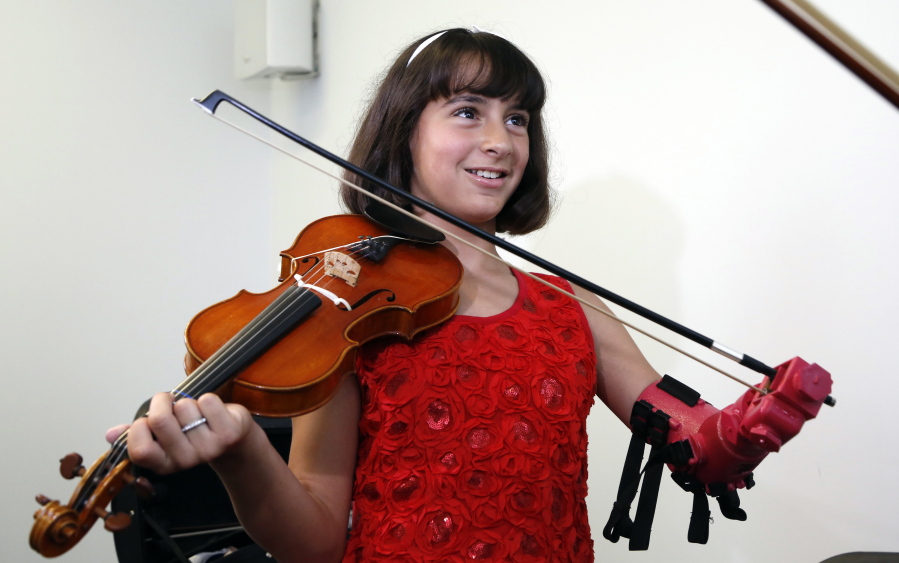FAIRFAX, Va. — The pressure was on for Abdul Gouda and his classmates at George Mason University: not only did their graduation depend on the success of their project, but so did the hopes of an impossibly cute 10-year-old girl.
Fifth-grader Isabella Nicola Cabrera wanted to play the violin, but she was born with no left hand and a severely abbreviated forearm. Her music teacher at Island Creek Elementary in Fairfax County had built her a prosthetic allowing her to move the bow with her left arm and finger the strings with her right. But the prosthetic was heavy and he thought there might be a better option. He reached out to his alma mater, George Mason University.
As it happened, Gouda and his four teammates in the bioengineering department were in the market for a project. Students are required to take on a capstone project their senior year and their initial idea had fallen through. Still, Gouda admitted some hesitation at the outset.
“It’s sort of a lot of pressure,” he said. “You’ve got this young girl who’s counting on you and you’re expected to deliver.”




